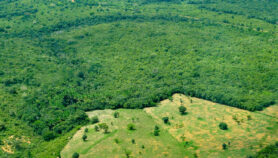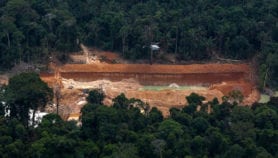By: Mike Shanahan
Send to a friend
The details you provide on this page will not be used to send unsolicited email, and will not be sold to a 3rd party. See privacy policy.
The number of people living in the path of potentially devastating floods is set to double — from one to two billion — within two generations unless adequate preventative steps are taken, according to researchers at the United Nations University (UNU).
The researchers blame climate change, deforestation, rising seas and population growth for the elevated risk of facing once-in-100-year flooding.
The warning coincides with the opening in Germany of the UNU Institute for Environment and Human Security (UNU-EHS), which is dedicated to studying natural disasters and building governments’ capacity to respond to them.
“The growing frequency and magnitude of extreme environmental events worldwide has intensified research interest in natural disasters, as well as in regional vulnerability and response capabilities,” says Janos Bogardi, founding director of UNU-EHS.
Each year, 25,000 people are killed in floods worldwide, and many more are affected by resulting homelessness, disease and crop failures. The threat varies from country to country. But it is clear that poor, developing nations bear the brunt of annual flooding and the huge costs that result. Floods in Asia caused economic losses of US$136 billion between 1987 and 1997, according to UNU-EHS.
Of the 30 countries with the greatest ‘relative vulnerability’ — the number of people killed by floods per million exposed — 28 are in Africa, Asia, Latin America and the Pacific. Venezuela, where nearly 1,500 people died in floods each year between 1980 and 2000, tops the scale, followed by Somalia, Morocco and Papua New Guinea. According to data from the United Nations Development Programme, more than 90 per cent of the populations of Bolivia, Ecuador and Nepal are exposed to floods.
Each year, floods and weather-related disasters cost the global economy US$50-60 billion. According to Bogardi, these losses could be reduced if current spending on flood prevention and prediction were increased. Whilst countries are generous with post-disaster relief, they are thrifty where preparedness is concerned, spending US$100 on relief for every US$1 that is spent on preparedness.
“There needs to be a shift in the international mindset — from reaction and charity to anticipation and pre-emption,” he says.
According to scientists, human activities are generating the increased flood risk. Rising sea levels linked to global warming threaten populations in coastal lowlands and small islands, and higher sea temperatures may increase the frequency of cyclones and storm surges reaching shores. Meanwhile, widespread deforestation, particularly in mountainous regions, increases the chance of rivers flooding.
“The thousands of tragic casualties from flooding in Haiti and the Dominican Republic in recent weeks underline the extreme vulnerability of developing countries,” says Bogardi, adding, “While economic losses due to natural disasters destroy resources equivalent to two per cent of GDP in developed countries each year, in developing countries the proportion can reach as high as 13 per cent”.













